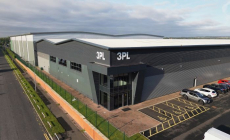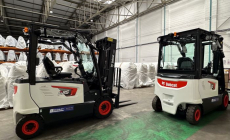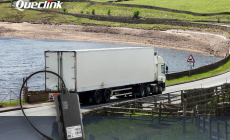-
Women Leading the Way in the UK Material Handling Industry - December 12, 2025
-
LiftEx 2025 live from Liverpool - December 11, 2025
-
DATA ANALYSIS – THE FOUNDATION OF EVERY PEAK SEASON - December 5, 2025
-
Creative education specialists Creative Hut give 3PL full marks for onboarding excellence - December 5, 2025
-
Unlimited Industries raises $12M to build the AI construction company that will power America’s future - December 4, 2025
-
Scottish Leather Group gets full-support solution from Rushlift - December 4, 2025
-
Etaily lands strategic investment from Japan’s SMBC – bringing total funding to $24M for Social Commerce enablement platform - December 4, 2025
-
Winners lift their LEEA Awards and raise the industry - December 4, 2025
-
Prism eLogistics and Brand Angels Partnership Gives Brands the Full Package - December 3, 2025
-
New data shows Tesla in danger of losing its way as European consideration to buy Chinese cars jumps 16% in 12 months - December 3, 2025
Calculate the ‘cost to serve’ and maximise warehouse ROI
Are your warehousing costs higher than they should be? Probably. Most companies know what their warehouse is costing to run, but they have no idea what the minimum spend to operate their warehouse should be.
There is a huge difference between these two figures and it’s called lost profits.
At IMHX 2019, a visit to Indigo Software (booths #19J80 and #20F30) will put you on track to understanding lost profit levels by calculating the true ‘cost to serve’ of your warehouse function.
Without knowing what the minimum running costs for a specific warehouse should be, initiatives to reduce spending and increase efficiency are unlikely to be successful. The same is true when implementing new technology. A recent global research study found 80% of companies intend to invest in new warehouse technology as part of their strategy to become more competitive and reduce costs, with 60% reporting challenges due to inadequate labour efficiency and productivity as a key driver.
Almost without exception, Indigo encounters very few businesses that understand their cost to serve. They know their costs, overheads and sales revenues and they might know the difference between warehousing and transport costs, but they have no idea how it is built up and how to improve it. Yet with expert support and guidance, it is such a straightforward problem to resolve and deliver real efficiency cost savings for the business.
That’s where Indigo can help. Prior to any software implementation project, we work with clients to identify how existing processes can be improved before the addition of new warehouse management systems (WMS) software technology.
It’s one reason why we can guarantee such a rapid ROI.
A visit to Indigo Software at IMHX 2019 will provide answers to questions like:
· What is the most efficient way to process incoming and outgoing goods?
· How much time should be spent on each warehouse management activity?
· How can existing resources be used more efficiently?
During your project our highly experienced supply chain consulting team will explore what changes they should make to operations before implementing a WMS. These changes may be to organisational structure and roles / responsibilities or to the detail of business processes, for instance to picking and replenishment tasks. Indigo’s approach is to consider,
if there were no resourcing issues or software constraints, how best would the warehouse operate?
Next steps
Learn more about Indigo Software’s unique approach to WMS implementation.
Visit the Indigo Software booths #19J80 and #20F30 at IMHX 2019 to discuss how Indigo WMS is a solution to your warehousing challenges.
Contact Indigo at www.indigo.co.uk to organise a meeting with our experts at IMHX 2019.

































